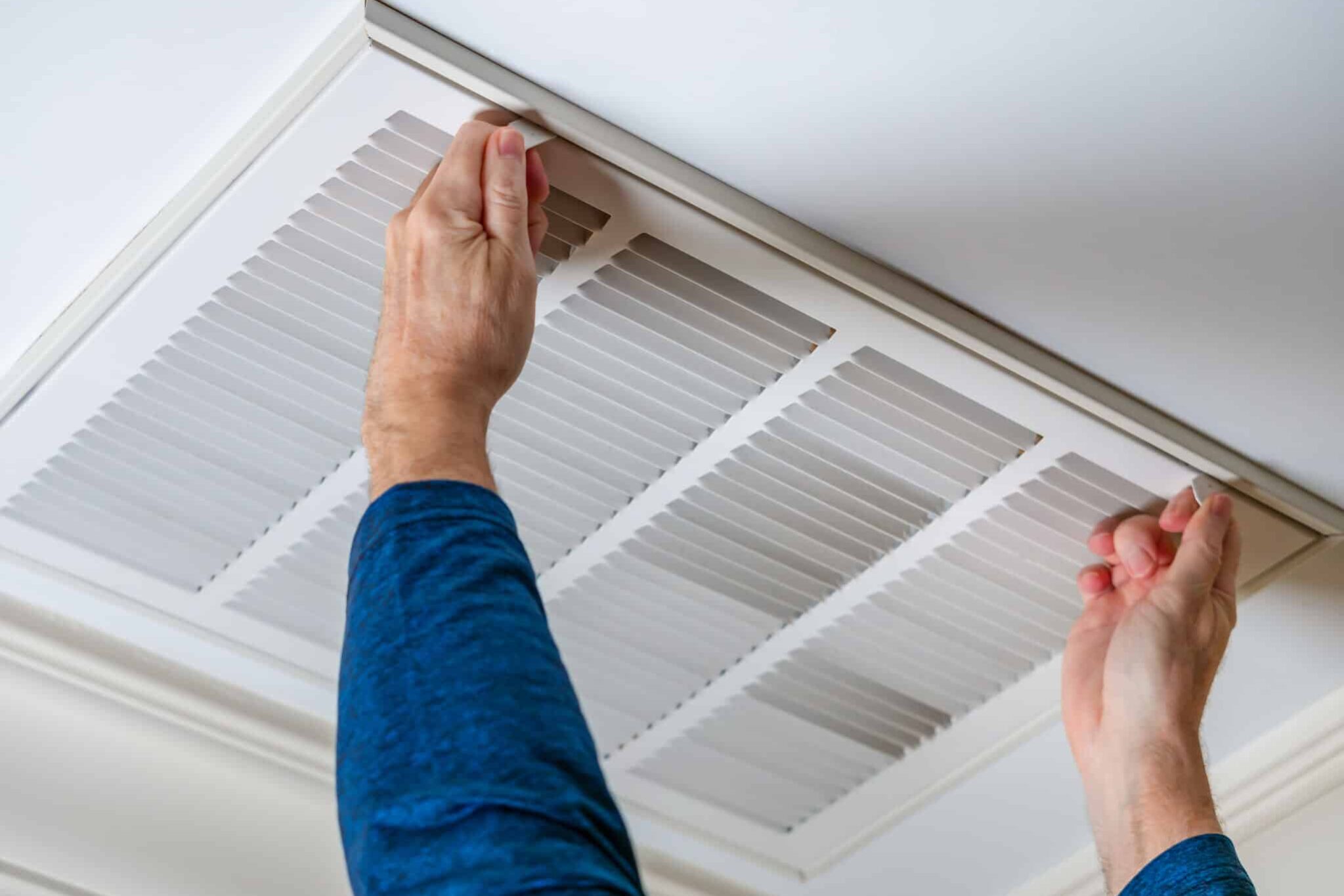Mold never sleeps—so you shouldn’t sleep on removing it. It can wreak havoc on your home if you don’t immediately remove it.
But what if you can’t spot it? Typically, mold can easily be identified on walls, ceilings, and other surfaces susceptible to water damage. Identifying mold growth in air ducts can be a bit of a challenge. If mold begins growing in your air ducts, you won’t be able to see it—but you’ll indeed smell it. In this article, we’ll walk you through the causes of mold in air ducts, how to recognize it, and what you can do to remove and prevent further growth.
Table of Contents
What Causes Mold in Air Ducts?
A warm, moist environment is just what needs mold to grow. Common causes of mold growth in air ducts could be anything from oversized air conditioning units to leaking air ducts. Large air conditioning units can cool a small room so fast that it will turn off before it’s dehumidified, creating excess moisture to build up in your ducts.
Or, your ducts could be leaking. A leak will invite warm air and moisture into your air ducts, establishing the ideal environment for mold growth.
 Types of Mold Found In Air Ducts
Types of Mold Found In Air Ducts
Homeowners tend to have a basic understanding of what mold looks and smells like. But did you know that various types of mold can grow in your air ducts? Here are a few common ones.
Acremonium
This type of mold is one of the most common to be spotted in air ducts. White in color and powdery in texture, this mold can meld with other types of fungi that can cause health concerns.
Aspergillus
Aspergillus is a difficult mold to identify because it can show up as many different colors like white, yellow, and green. If aspergillus grows in your air ducts, you risk a potentially unsafe indoor environment.
Cladosporium
One of the most common types of indoor mold is Cladosporium. Cladosporium can show up as green, brown, or black spots that grow on walls, wooden surfaces, or areas near your air vents. Cladosporium can ruin your home if you don’t remediate it.
Stachybotrys
A type of black mold, Stachybotrys can create a potentially dangerous indoor environment for you and your family if not dealt with right away.
Tips & Insights: What is White Mold & How to Remove It
How to Check for Mold in Air Vents
If you are suddenly smelling any musty odors or noticing unusual spots around your air conditioner vents, then it’s best to call your local mold inspector. A certified inspector will take a sample of the suspected area and send it off for laboratory testing to confirm whether or not you have a mold issue on your hands.
Negative Effects of Mold in Air Ducts
Mold notoriously emits a musty odor that ruins indoor air quality. Along with orders, mold can further deteriorate important structural components of your home or business.
 How to Get Rid of Mold in Air Ducts
How to Get Rid of Mold in Air Ducts
Need to get rid of mold quickly? Follow these three steps for guaranteed mold removal.
- Turn off your air conditioning system.
- Determine whether you have fiberglass, flex sheet, or metal ducts.
- Hire the professionals at CTR for expert mold remediation.
How to Prevent Mold In Air Vents
Once you’ve gotten rid of mold growth in and around your air vents, you’ll want to keep it that way. Prevent future mold growth by using an air purifier and a dehumidifier to eliminate mold particles while controlling your home’s humidity levels. Remove any items obstructing your air vents and ensure that your AC drain pan is draining correctly.
Finally, you’ll want to schedule regular air duct cleanings and HVAC maintenance.
Reliable Mold Remediation Services Near You
As soon as you start noticing the adverse effects of mold in your air ducts, contact the specialists at CTR for mold removal and clean-up services. Our team provides fast and reliable services throughout Southern Idaho and can be reached anytime throughout the week. Speak to an expert today.



 Types of Mold Found In Air Ducts
Types of Mold Found In Air Ducts How to Get Rid of Mold in Air Ducts
How to Get Rid of Mold in Air Ducts




